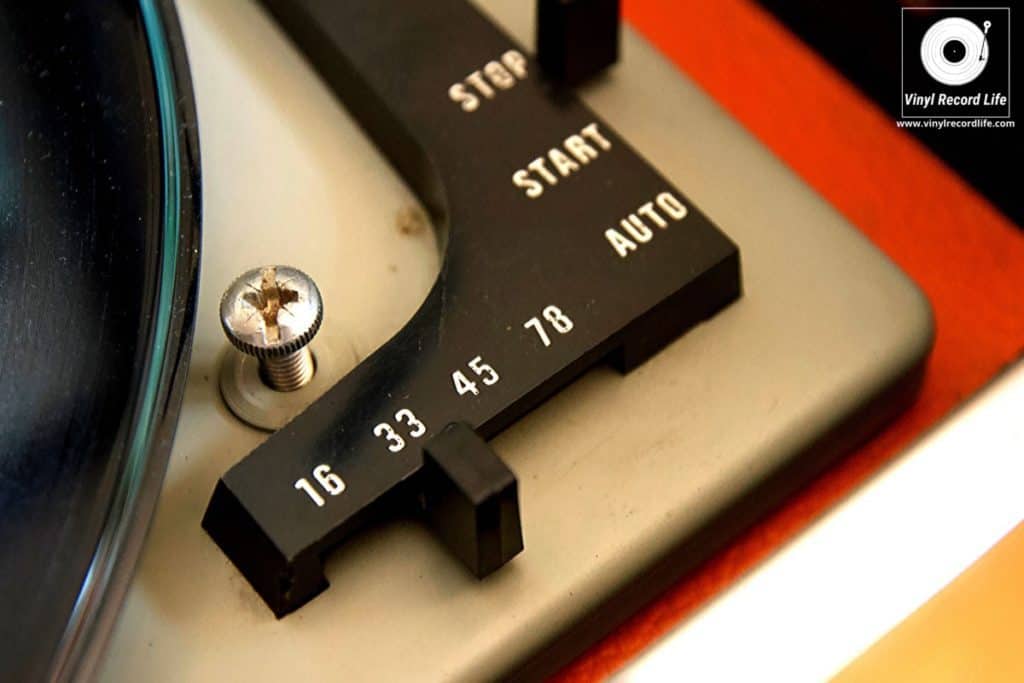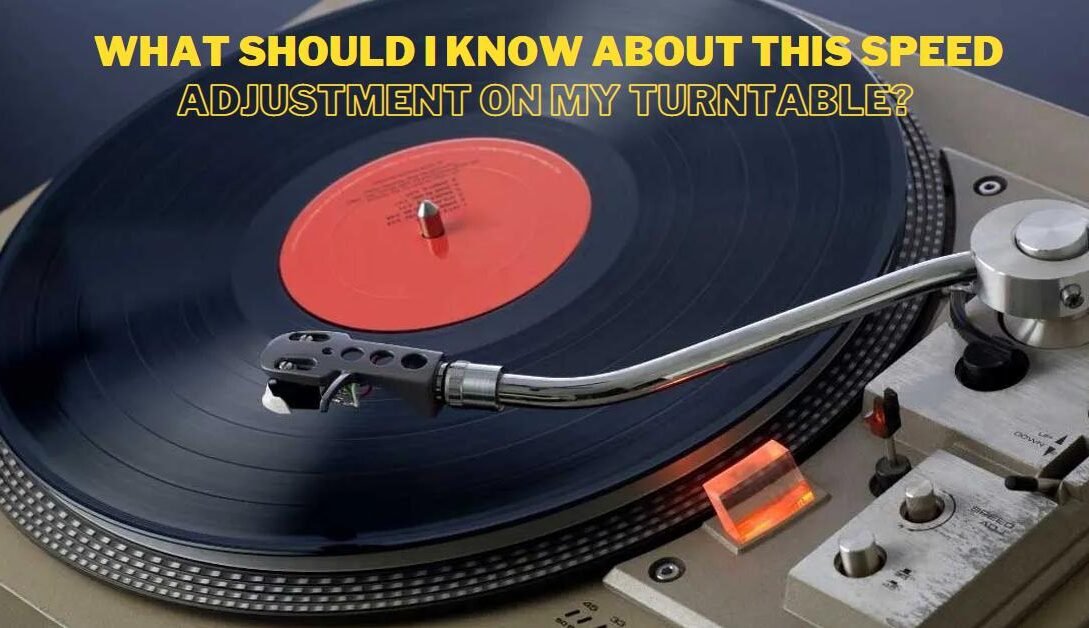You should know that speed adjustment is a crucial feature of a turntable that ensures accurate playback. Playing records at the wrong speed can cause distortion and ruin the listening experience. Proper speed adjustment is essential, and you should periodically check the speed to maintain optimal performance.

Types of Speed Adjustment
There are two primary types of speed adjustment found in turntables: manual and automatic. Manual speed adjustment means you have to manually adjust the speed of the platter by adjusting a knob or a lever.
This method is typically found on older and budget turntables. Automatic speed adjustment, on the other hand, means that the turntable will automatically adjust the speed of the platter to the correct speed. This method is commonly found on higher-end turntables and can be more accurate than manual adjustment.
Importance of Correct Speed
The correct speed of a turntable is crucial for accurate playback. Vinyl records are designed to be played at a specific speed, typically 33 1/3 RPM or 45 RPM, depending on the record’s size and format.

Playing a record at the wrong speed can cause the music to sound distorted or off-key, ruining the listening experience. It’s essential to make sure your turntable is playing at the correct speed, which can be achieved through proper speed adjustment.
How to Adjust Turntable Speed?
The method for adjusting turntable speed depends on the type of speed adjustment your turntable has. If your turntable has manual speed adjustment, you will need to adjust the speed yourself. Typically, you will need to adjust the speed by adjusting a knob or a lever on the turntable’s base. You will need to use a strobe disc to check the turntable’s speed and make adjustments until the speed is correct.
If your turntable has automatic speed adjustment, you will not need to adjust the speed yourself. The turntable will automatically adjust the speed to the correct speed using a built-in motor and sensors.
How do you tell if a record is 33 or 45 rpm?
The speed of a record is typically labeled on the label or the outer edge of the record. If there is no label, you can determine the speed by measuring the diameter of the record. A 12-inch record is usually played at 33 1/3 RPM, while a 7-inch record is typically played at 45 RPM. If you’re unsure of the speed, you can also check the catalog number on the record label or consult a reference guide to determine the appropriate speed.

Why is my turntable not playing at the right speed?
Several factors can cause a turntable to play at the wrong speed. It could be due to a faulty motor, incorrect belt tension, or a damaged stylus. Additionally, manual speed adjustment turntables can be challenging to set precisely, which can result in incorrect speed. Regular maintenance and cleaning of your turntable can help avoid speed issues. If you’re unsure of the cause of the problem, it’s best to consult a professional to diagnose and fix the issue.
What is manual speed change on a turntable?
Manual speed change on a turntable means that the user must adjust the speed of the platter themselves. This method typically involves adjusting a knob or a lever on the turntable’s base to achieve the correct speed.
Manual speed adjustment turntables are typically found on older and budget turntables and can be less accurate than automatic speed adjustment turntables. It’s crucial to use a strobe disc to check the turntable’s speed and make adjustments until the speed is correct.
FAQs
How often should I check the speed of my turntable?
It’s a good idea to check the speed of your turntable periodically, especially if you notice that your records are not sounding as they should. It’s recommended to check the speed of your turntable every six months or so.
Can playing a record at the wrong speed damage the record?
Playing a record at the wrong speed can cause the music to sound distorted or off-key, but it is unlikely to damage the record itself.
Conclusion: Speed adjustment is an essential feature of a turntable that allows you to control the rotational speed of the platter and ensure accurate playback. There are two primary types of speed adjustment: manual and automatic. It’s crucial to make sure your turntable is playing at the correct speed to avoid distortion and other issues that can affect the listening experience. By following the methods for adjusting turntable speed and regularly checking the speed, you can ensure the best listening experience possible from your vinyl records.



[…] selecting an amplifier for your turntable, there are several factors to […]
[…] jack: There is also a headphone jack on the turntable, which allows you to listen to music without disturbing […]
[…] answer to this question is not a simple yes or no. While vintage turntables do have some advantages over modern ones, they also have some […]
[…] simply the balance between the price you pay for a turntable and the sound quality it produces. A turntable with a high price-to-fidelity ratio offers great sound quality at an affordable […]
[…] you can plug a turntable into a laptop using the same method described above. Connect the turntable to the preamp, then […]
[…] turntable is its precision and accuracy. High-end turntables are engineered to provide precise and accurate rotational speed, ensuring that the music is played at the correct pitch and tempo. They also have advanced speed […]
[…] that we have discussed the possible reasons for turntable playing records too fast, let’s discuss how to fix this […]